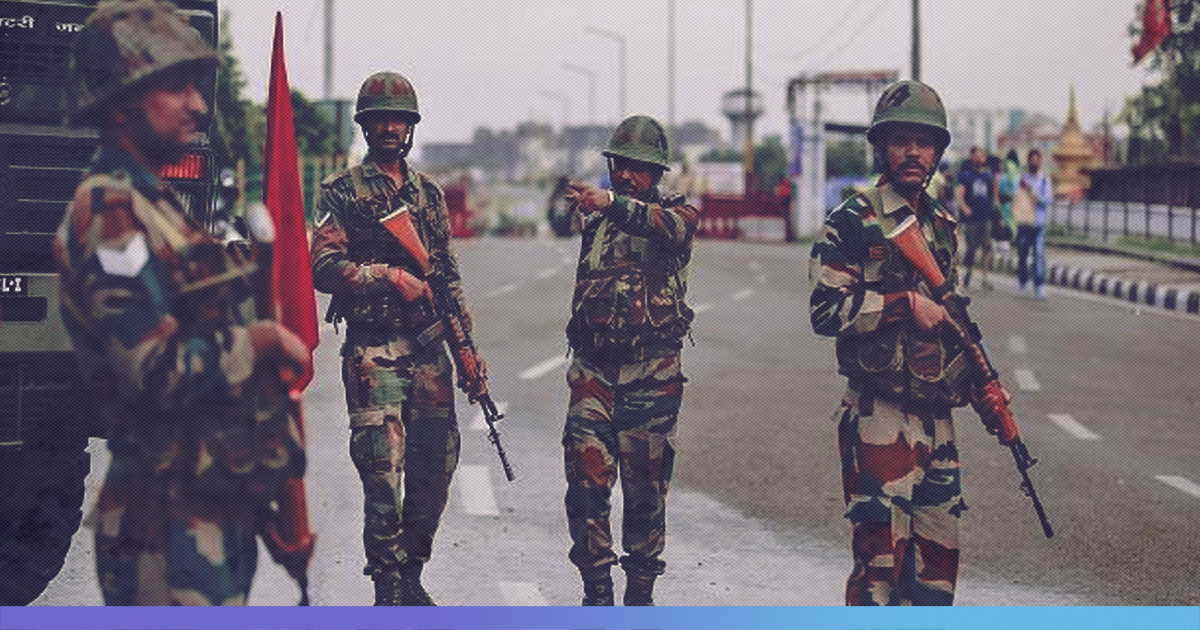The Indian Army now plans to buy just 1,800 sniper rifles and 2.7 million rounds of ammunition, much lower than its original requirement of 5,720 sniper rifles and 10 million rounds of ammunition, citing budgetary constraints.
The original order of sniper rifles would have cost $140 million, but the Army has decided to prioritise the purchase of more modern equipment.
Speaking to The Logical Indian, Brig Sandeep Thapar, a retired Infantry Officer said: “There is a desperate requirement of the sniper, especially at the Line of Control. However, if the orders have reduced by 70 per cent, there must either be a financial or resource crunch or a bureaucratic delay. Maybe the Army has decided to give the Snipers to the LOC battalions and not the Infantry.”
The 1.3 million-strong Indian Army’s efforts to purchase 5,720 sniper rifles began in February 2018. But the order was scrapped in July this year after four vendors, including the US-based Barrett, Indonesia’s PT Pindad and Russia’s Rosoboronexport, failed to meet the technical requirements of the force.
“I do not understand the government’s thought process. We are unlikely to fight a nuclear war in the near future. However, the Infantry is the queen of the battle which is involved in a day-to-day fight in Kashmir and the north-east. There is an urgent requirement of sniper rifles for the infantry. This will give the infantry officers a lot of confidence,” Retd Maj General Nanjappa, an infantry officer, said.
Plans to purchase new equipment from global manufacturers have also been affected by the government’s desire to meet the needs of the armed forces through the ‘Make in India’ initiative, which aims at boosting local defence manufacturing.
“The process of identifying a weapon that would suit the army has taken a long time as there always remains a heavy requirement of ammunitions at the Line Of Control. We had bought the Russian sniper rifle, Dragunov, back in the 80s. It was pretty heavy, and the range was not adequate. Better weapons were in the market, and slowly we started getting less of that,” Brig Thapar said.
Reorganisation In Force?
General Bipin Rawat, the Chief of Army Staff (COAS) of the Indian Army, is leading the massive organisational restructuring in the force. This attempt to restructure the Indian Army largely includes the downsizing of standing armies and shifting the focus to its ‘quality’ needs of modern warfare.
The initiative is also a response to PM Modi’s $250-billion modernisation plan for the three armed forces. This also marks the first attempt at downsizing the force across combat, support and logistics units.
Pakistan had bought a new sniper rifle which it was using fairly effectively on the LoC. We needed to buy an equally good rifle to deter Pakistan’s efforts,” Brig Thapar said.
“The confidence level of our men fighting is more important today, tomorrow and the day after the battle than to prepare for a battle that we will never fight,” Retd Maj General Nanjappa said.
As a part of the re-organisation, there will also be an increased focus on the Army’s 8000 officer shortfall to 5000 officers. Various options such as decreasing the duration gap between promotions and the recruitment of officers from soldiers other ranks such as Junior Commissioned officers (JCO’s) will be explored. The other objective will be to improve leadership within the force.
This restructuring and reorganisation attempt seeks to downsize the army by over one lakh personnel, leaving the force with greater financial resources to fund equipment upgrades and purchase up-to-date military platforms.
General V.K. Singh, the former Chief of Army Staff, had stated that these changes would ‘reorganise, restructure and relocate’ formations in order to achieve enhanced agility and lethality.
“This is a step in the right direction. The Army has been thinking about cutting the tail since the early 80s,” Brig Thapar added.
Also Read: Indian Army To Be Downsized By 27,000 Soldiers With Aim To Cap Strength At 12.5 Lakh











